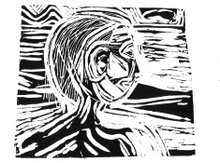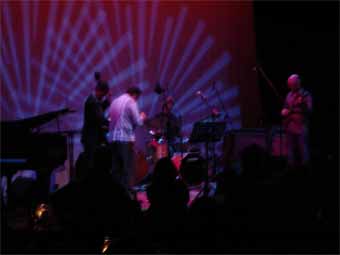
There has always been a significant between the visual arts and music.Examples abound. French composer Claude Debussy hung out with the impressionist artists and was influenced to become a master of instrumental color and texture. It is this attention to tone color -- his layering of sound upon sound so that they blend to form a greater, evocative whole -- that linked Debussy in the public mind to the Impressionist painters.
In New York in the 1940's the Abstract Expressionist movement produced work that exemplified the careful balance between accident and control that characterizes both art and the improvisational jazz of bop. Jackson Pollock was an avowed jazz fan, often attending live performance's at New York's Five Spot club. Critic Ellen Landau notes the influence of jazz on Pollock's painting:

"As early as 1945...one prescient critic compared the "flare, spatter and fury" of Pollock's paintings to modern music...Pollock loved jazz..."rocking and rolling" for days on end to Dizzy Gillespie, Bird, Dixieland, and bebop. What undoubtedly attracted him to this type of sound was not just its rhythm and tempo, but its naked presentation of honest and deeply felt emotion..."
Minimalism in art has been enthusiastically taken up by composers. Terry Riley, Steve Reich and Philip Glass first explored these concepts in the classical field. The great Australian band The Necks have a synthesis of improvisation and minimalism.
The well know Australian artist Joe Furlonger says that the act of applying paint to canvas is similar to improvisation in jazz. By this he meant that, after drawings and drafts, one is left with the gesture, the act of creation which is by definition improvisatory. It is unsurprising to find a collection of artists at a gig. (Some have appallingly anachronistic tastes in music but the same could be said of musicians for art.)
Which all brings me to Florence Forrest's 1000 Cranes. Florence's cranes look like Kabuki characters. As she writes in her blog http://windbagandthunder.blogspot.com/ the crane is a symbol of longevity and grace. There is a beauty and a serenity in these objects that belies a rigor in thought and theory that is the hallmark of the best in music and art. The cranes need a musical landscape to exist upon: beautiful and serene; quiet and profound .




